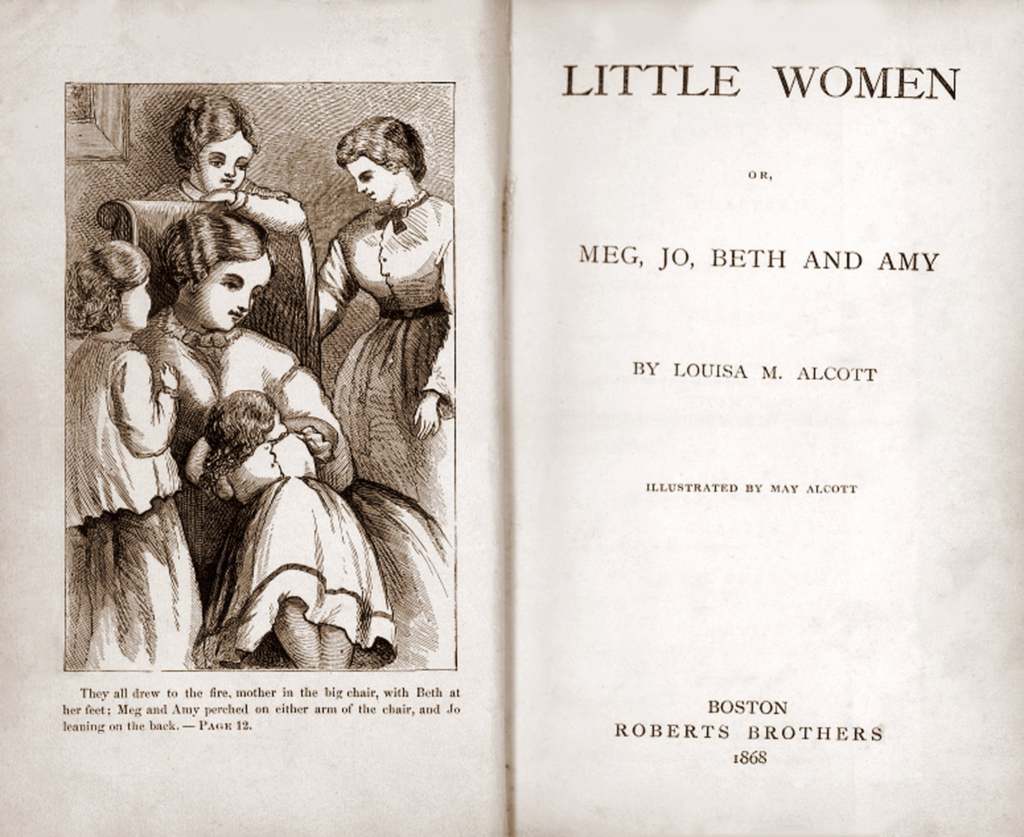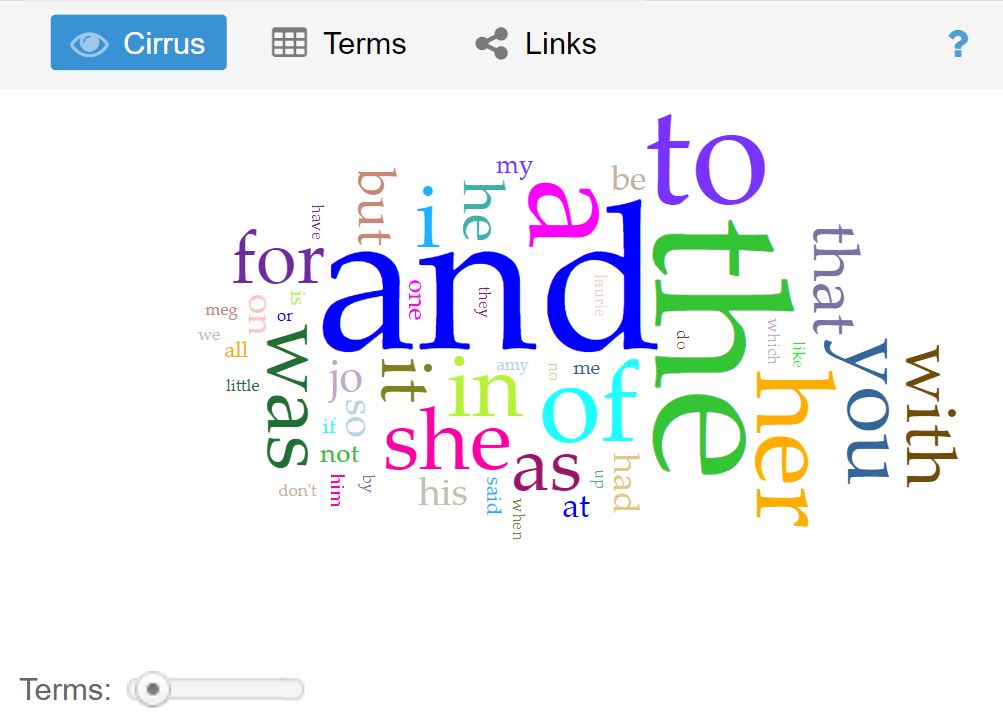For this assignment, I analyzed Louisa May Alcott’s Little Women through Voyant.

I first used the “Terms” tool to look at the frequency of words in the book. The ten most common words were “and,” “the,” “to,” “a,” “of,” “her,” “i,” “in,” “it,” and “she.” Unsurprisingly, most of them are stopwords. Excluding them, the most common words would be “her” and “she.” This result reflects the fact that Little Women is a narrative centered around female characters.

Next, I searched for the main characters’ names in the “Trends” tool. Jo’s name appeared most frequently and consistently throughout all segments of the book. “Meg” also occurred quite frequently (albeit less frequently than “Jo” did) in the beginning, which dwindled after the fifth segment of the book. This might be because of her marriage, which pushed her away from the main plotline of the book toward the end.

“Amy” and “Beth” appear less frequently, showing that they are relatively minor characters. Laurie is also a minor character, but the pattern in which his name appears is very similar to Jo’s pattern. This may be the case because they are the ones who interact with each other the most in Little Women. Their relationship is an important part of the book. This observation is also supported by the “Collocates” tool: there are 46 instances in which “Jo” and “Laurie” appear in proximity to each other.
In using Voyant, I not only engaged in distant reading but also close reading. I looked up the word “women” in the “Contexts” tool and skimmed through the sentences that included the word. For instance, Amy says, “Women should learn to be agreeable, particularly poor ones; for they have no other way of repaying the kindnesses they receive.” In another instance, Alcott writes about how exhausted Meg is exhausted because of chores, saying “Want of exercise robs them [mothers who are oppressed under housework] of cheerfulness, and too much devotion to that idol of American women, the teapot, makes them feel as if they were all nerve and no muscle.” Also, there is a part in the book where Laurie dares to counter Mrs. Grundy’s sexist views, saying: “Women work a good many miracles, and I have a persuasion that they may perform even that of raising the standard of manhood by refusing to echo such sayings.” By showing how different characters think about and grapple with the concept of womanhood, Little Women critically engages 19th century sexism and patriarchy. By comparing Little Women with other books written by Louisa May Alcott on Voyant, we will be able to understand how her view of womanhood evolved over time and how that was reflected in her literary work.
While I think Voyant is very useful in general, the “Bubblelines” tool struck me as odd at first. Only after reading its description was I able to understand how it worked. Also, I am still figuring out how to separate multiple overlapping bubblelines from one another.
After conducting a text analysis through Voyant, I can export my results by clicking the arrow in the upper right corner of the screen. There are three forms in which I can export the results: an HTML snippet, a bibliographic reference, and a new Spyral Notebook.
